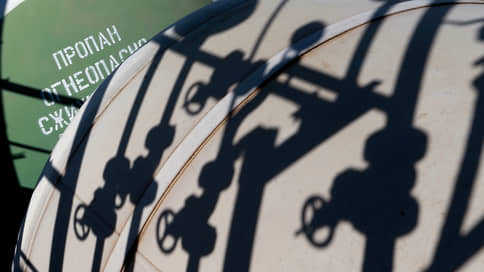EU bans import of liquefied petroleum gases from Russia
[ad_1]

Europe bans the import of liquefied hydrocarbon gases from Russia; for existing contracts, the ban will come into force with a one-year delay. The European direction occupied 75% of the total volume of Russian LPG exports, which could reach 4 million tons in 2023. The key consumer was Poland, for which the ban on purchases of Russian raw materials will also become a problem. Over the course of the year, Russian companies will have to actively search for new markets, which will require, first of all, the expansion of transport infrastructure for supplies to China.
EU as part of the 12th package of sanctions against Russia banned import of liquefied hydrocarbon gases (LPG). The exception will be already concluded supply contracts with a delay of 12 months.
The EU believes that such a restriction will reduce Russia’s income by more than €1 billion per year.
Russia produces about 12 million tons of LPG, the key suppliers are SIBUR and the largest oil companies. Over nine months, output amounted to 9.2 million tons (an increase of 4.5% compared to last year). If current dynamics continue, LPG exports in 2023 could grow by 15%, to 4 million tons, which would be almost 3% higher than the pre-sanction 2021 figures. The companies declined to comment.
The main volumes of LPG are exported by rail. In January-November, exports by this type of transport decreased by 2%, to 3.5 million tons, Natalya Dryzhak, head of the strategic development and marketing department at SG-trans, reported on December 13. According to her, more than 75% of these volumes came from Europe. Reorientation to the east, mainly to China, is hampered by low infrastructure capacity and the lack of sufficient transshipment capacity for LPG in the Far East, explained Ms. Dryzhak. According to her, the construction of infrastructure for transshipment of liquefied hydrocarbons in the Far Eastern Federal District is hampered by the lack of load guarantees and the high level of investment. She named export through Mongolia to China as one of the possible options for diversifying LPG supplies. Moreover, Natalya Dryzhak believes, both direct railway communication and multimodal service are possible. “These options are fraught with difficulties, but we must look for opportunities in different directions,” she emphasized.
Maxim Reshetnikov, head of the Ministry of Economy, on the priority of cargo at the Eastern training ground, March 28:
“The added value in these products (liquefied gases – Kommersant) is, as a rule, tens of times higher than the product with which all this competes at the Eastern site, namely thermal coal.”
A Kommersant source on the market notes that the largest importer of Russian LPG in Europe was Poland, which recently purchased directly from the Russian Federation about 1 million tons per year. The country will be able to partially replace volumes from the Russian Federation through supplies from the Middle East and the United States through its three sea terminals. But this will increase the cost of the propane-butane mixture for Europe, Kommersant’s source believes. He also believes that rising prices will reduce the capacity of the Polish LPG market, where it is mainly used as automobile fuel, in favor of gasoline.
Kommersant’s interlocutor believes that the official closure of supplies to Europe, which has already reduced LPG consumption over the past two years, will become a problem for Russian exporters.
They will have to redirect their volumes either to the ports of the Black Sea, which entails significant risks, or in the eastern direction, where supplies are limited by the capabilities of the railway. Companies and the government need to spend the next year primarily on expanding bottlenecks and building infrastructure, both port and railway, Kommersant’s market sources believe.
The head of Rupec, Dmitry Semyagin, agrees that Russian producers have serious work to do to reorient flows and resolve infrastructure issues to increase the volume of LPG supplies to the east. He recalls that supplies to China, Afghanistan, and some Central Asian countries have increased significantly in 2022–2023, but so far none of these directions can compensate for the closure of the European market. At the same time, the expert says, “we have already seen in other markets that in a year we can find opportunities, alternative supply channels and reduce the negative consequences of sanctions.”
[ad_2]
Source link





